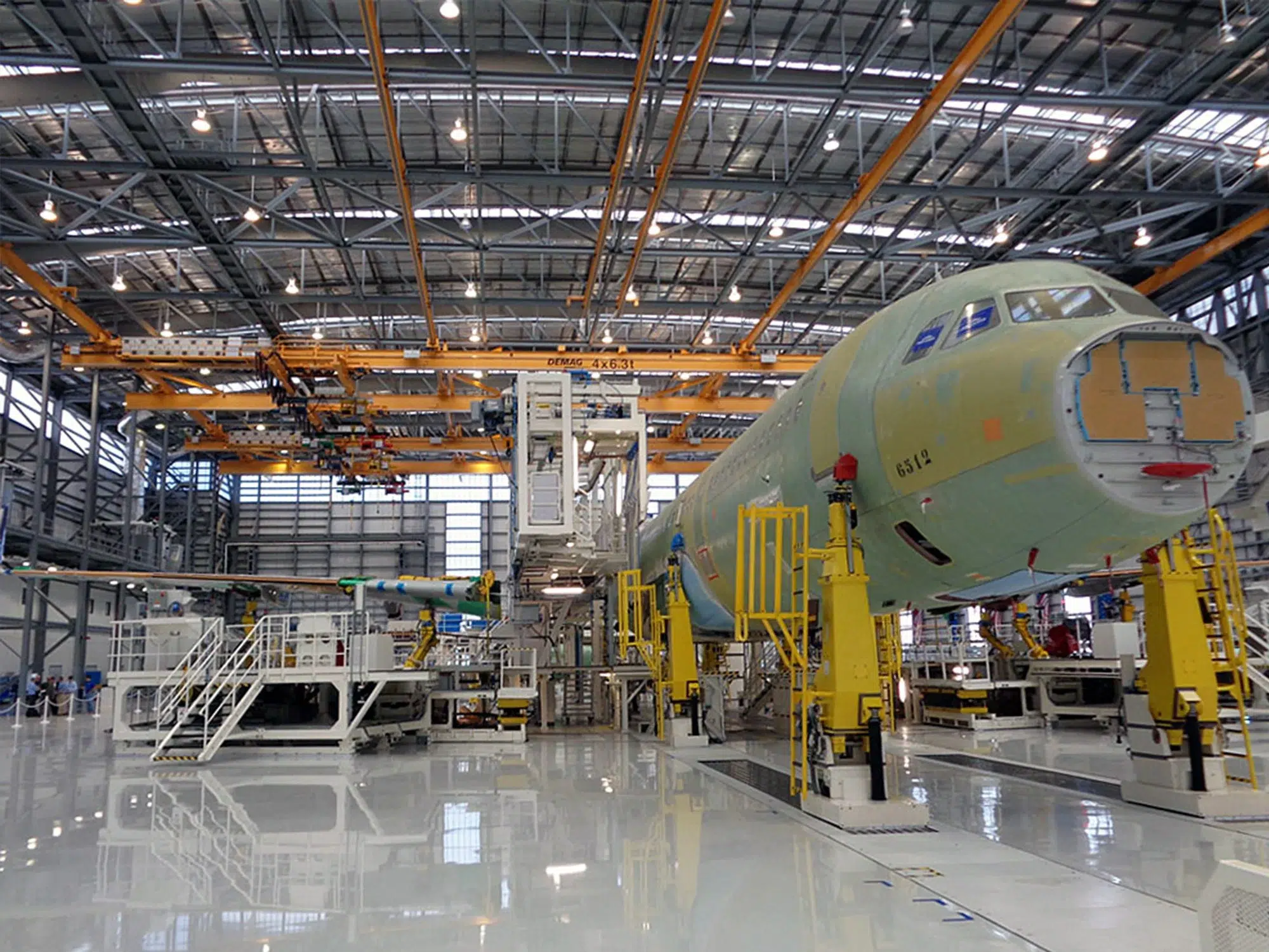
Partnering with the Giants in Aerospace
HPM’s relationship with Airbus began a decade ago with our involvement in the construction of the Airbus Engineering Center. Then, when HPM began work with Airbus to build the A320 Final Assembly Line (FAL) at Mobile’s Brookley Aeroplex in 2015, the aerospace giant deemed HPM “the local experts.” Our knowledge of the community and both state and federal laws plus the relationships cultivated with local contractors set us apart from other companies who vied for the project.
HPM completed the A320 FAL project in 2015 —four months early and nearly 7 percent below budget. The assembly line and associated facility produces and delivers approximately four aircraft per month with the first Mobile-assembled aircraft celebrated in April 2016.
“It was an ambitious timeline, no doubt — I think many wondered if it was truly possible. HPM assembled a fantastic team that developed and executed the plan that led to the facility being completed not just on time, but ahead of schedule,” said Jared Scheeter, HPM Program Executive. “We hired the right designers and contractors to take the project from a vision to a reality and kept everyone focused on the mission from start to finish.”
As Airbus’ first manufacturing facility in North America, the $600 million A320 project needed a quick turnaround. It brought its fair share of unique challenges to the table — because of airplane construction standards, the facility was designed and built using the metric system, even though HPM usually operates on the U.S.-standard imperial system of measurement. And HPM wasn’t just managing the Final Assembly Line project. They also oversaw the design and construction of the Final Phase/Flightline Hangar, a service building, the Flightline Delivery Center, a logistics center, the Transshipment Hangar, a main gate, and the gauging canopy, as well as an off-site logistics building. HPM was also responsible for changing the associated infrastructure. Roads had to be widened and reinforced to accommodate haul routes to truck in major prefabricated airplane parts such as fuselage and nose sections.
“Our efforts were closely coordinated with the design team to ensure dimensions and required clearances were properly considered ahead of the vehicle being fabricated,” Scheeter said. “I still remember the first parts being delivered through a parade of cheering Mobilians standing along the haul route.”
“All buildings on the A320 facility also earned LEED Silver status, with one earning LEED Gold,” Scheeter said. Leadership in Energy and Environmental Design (LEED) provides a framework to create efficient and cost-saving green buildings, and certification ensures electricity cost savings, lower carbon emissions and healthier environments for the places people live, learn, work and play. LEED Silver is the second tier of the rating system. Gold is third. HPM worked alongside teams from Europe, Asia and North America to determine the best ways to both meet the owners’ facility needs while also achieving LEED Silver status, which is uncommon for the region and even less so in the industrial and manufacturing industry.
In addition to LEED certification, the A320 FAL was named the 2015 Project of the Year by the Mobile Area Council of Engineers, as well as the 2015 Quality Pavement Award from the Alabama Asphalt Pavement Association. “All things considered, our first project was a resounding success made possible by the tireless efforts of many individuals,” echoed Scheeter. “A major factor in this success was the partnership and teamwork that developed between our team and Airbus. We quickly broke through cultural and language barriers to meld together into one incredible team that accomplished something great.”


